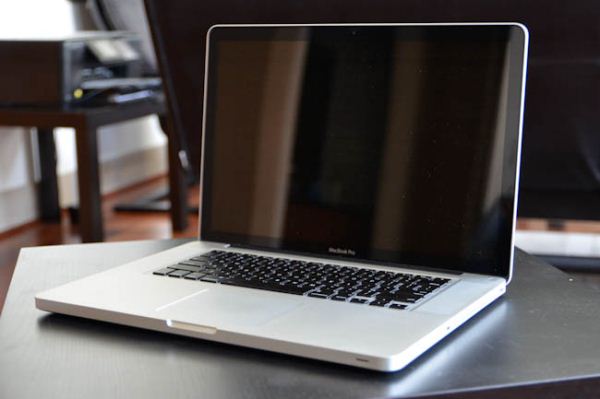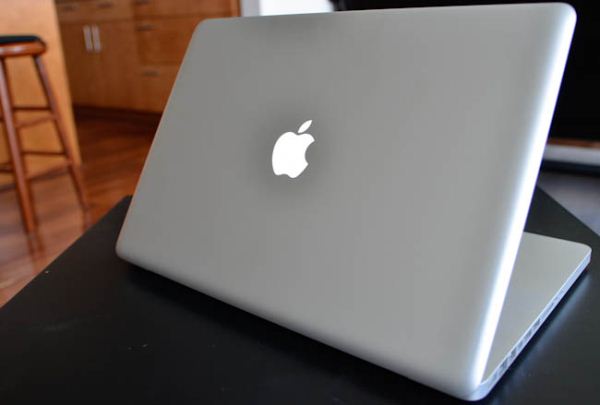The 2012 MacBook Pro Review
by Vivek Gowri on July 18, 2012 2:00 PM EST- Posted in
- Mac
- Apple
- MacBook Pro
- Laptops
- Notebooks
The 2012 MacBook Pro is a pretty intriguing product. It’s the latest and last in a line of standard-setting notebooks that helped shape the direction of the notebook industry over the last 5 years. This design has been around for a while, accompanied by the same general specsheet formula: the latest Intel processors, a performance-class GPU, a high quality display panel, and a $1799 starting price. These things haven’t changed since the original Intel MacBook Pros from 2006 (with the exception of the odd low-end 2009 MBP15, which started at $1599 and came with an Nvidia 9400M IGP).
The unibody MacBook Pro is one of the best engineered portables around, and the longevity of the design speaks to that. But at this point, it’s an aging design. Nearly four years in, the design has endured well, but it retains features that are starting to matter less and less - a DVD drive, Firewire, an IR window for the remote that hasn’t been included with new Macs in years. Possibly even Ethernet. I know some of our editors and readers rely on having an Ethernet connection, but I personally haven’t plugged an RJ45 jack into a notebook in years. Like, five or six years. You can see that Apple agrees - the Retina MacBook Pro has none of those things. The optical drive has been unceremoniously dumped, as has the IR port. The Firewire port and Ethernet jack have been traded for a second Thunderbolt port and an HDMI out (finally, HDMI comes to Macs - hooray for no longer needing those infernal adapters!). Based on my usage model, I make that trade twelve times out of ten. Two ports I never use for one I use regularly and one I will use going forward, and becomes worth more as more Thunderbolt accessories become available.
And when you think about it in those terms, you see where the normal 2012 MBP is flawed - it’s a design that’s rooted in the past, a four year old design with a one year stay of execution. That normally wouldn’t be a problem, but with the future being sold alongside it, it becomes a much more difficult sell. Especially when you consider this: if you were to buy the base 15” MBP and upgrade to a 256GB Samsung 830 SSD and 8GB memory (bringing it to spec-parity with the base rMBP), you’d be approximately $100 shy of the rMBP pricing. That’s $100 for a smaller, lighter notebook that’s just as fast and has a *significantly* better display. If you’re eligible for student discount, that difference is actually zero, because the rMBP has a greater student discount than the base MBP15. The rMBP is pretty pricey, but when you think about it, it’s a pretty good deal.
There are only a few legitimate reasons I can think of to skip the rMBP and get the MBP15, with the most reasonable of them being that you’re very fundamentally opposed to the soldered memory and custom SSD form factor. Another is if you’re highly dependent on a DVD drive and Ethernet and don’t want to pay for or carry around an external SuperDrive or GigE adapter. Or, you have a hard-set $1800 budget and simply don’t care about an SSD, extra memory, or having a good screen (or plan to upgrade them later).
But here’s my take – the 2012 MBP is a great notebook and a very solid portable system. I just don’t want one. For my money, I’ll either save some and get a discounted 2011 MBP15 or spend a bit more to step up to the Retina. And maybe this is telling, but as soon as I was done with the benchmarking and the major part of the writing for this review, I stopped using the MBP and picked up a base Retina. It’s the future, simple as that.












132 Comments
View All Comments
dillettante - Wednesday, July 18, 2012 - link
The superdrive can be replaced with more internal storage. I use a SSD for a fast system drive and supplement that with a large mechanical HDD for data storage.J
chemist1 - Wednesday, July 18, 2012 - link
Agreed, for many that might be the most significant advantage of the older form factor. Also, you would need the older form factor if you wanted a dual-SSD RAID configuration for better performance.Bonzauker - Wednesday, July 18, 2012 - link
Exactly the reason why I stay away from the retina, at least at the moment. I put one 256 GB as main drive and the 750GB replacing the DVD. For my job, a notebook with only 256GB is useless.GotThumbs - Wednesday, July 18, 2012 - link
I choose to read this additional Apple review since it was written by a different reviewer, but feel it provides little value over just posting the spec comparison sheet directly from Apples website. This is simply a comparison between Apples past iterations of its own past parts bins. How much time was spent on this anyway?It would have been more informative if it had included other vendors similarly spec'd systems in the performance. While they won't have resolutions comparable to the Retina screen....Apples hardware is made up of many PC components available in the market place. Of course this excludes Apples proprietary designed reiterations of PC components (SSD).
I think the only point that really needs to be made ...is that if your an Apple user...here is yet another version of the old case with overdue upgrades in the internals. Non-Apple users need not bother.
I used to like to read Anandtech because It would provide an opportunity to learn about new technology and provided comparable performance information between components and systems in a clean and unbiased manner.
From now on...maybe it would be best if any Apple product review begins with..This review sponsored by Apple.
I'll still continue to read Anandtech, but know that any Apple review is just an advertisement/endorsement and thus read it with limited expectations of an unbiased comparison whats currently available in the marketplace.
At least this reviewer provided readers with information on an option for savings by passing over Apples overpriced upgrades and go thought a vendor for the parts at a price savings. I'm sure Apple reps were not happy, but it helps provide a small sense of reader centric writing instead of pleasing Apple.
$2,200 for a laptop...when there are PC alternatives available for hundreds less....yet no mention or comparison of those systems. If readers are only browsing, email and FB'ing...is this really worth the money? Only if your a tech-fashonista.
Sad.
Sunburn74 - Wednesday, July 18, 2012 - link
Well said. Pretty much a review for people who have already decided they want to buy a mac and nothing else.Sunburn74 - Wednesday, July 18, 2012 - link
In addition, in this day and age, to sell any machine costing over $1000 without a SSD is an absolute travesty.nevertell - Wednesday, July 18, 2012 - link
Anand has stated before that there is little to no cross shopping between apple and pc laptops.It is difficult to review different hardware with different OS's. Whilst many components may seem to be the same, apple has been known before to slip their own secret sauce into the hardware to be able to do things that just wouldn't be possible with the standard PC hardware, like the scaling hardware in the rMBP.
Freakie - Thursday, July 19, 2012 - link
Scaling hardware? And I haven't really seem much secret sauce in Apple's hardware. I see lots of lazy sauce, and people confusing design flares with engineering prowess.pmhparis - Thursday, July 19, 2012 - link
So, in your opinion Apple didn't innovate with the rMBP+OSX scaling Where can i find it then? Not on any PC+Windows nor on any PC+Linux.You clearly refuse to see that its the whole package that makes the rMBPs scaling a class above everything else out today. Too much emotional investment in windows like so many others. At least it makes it easy to see that your complains are biased.
Super56K - Friday, July 20, 2012 - link
I think it's more emotional investment in the hatred of Apple as a whole.